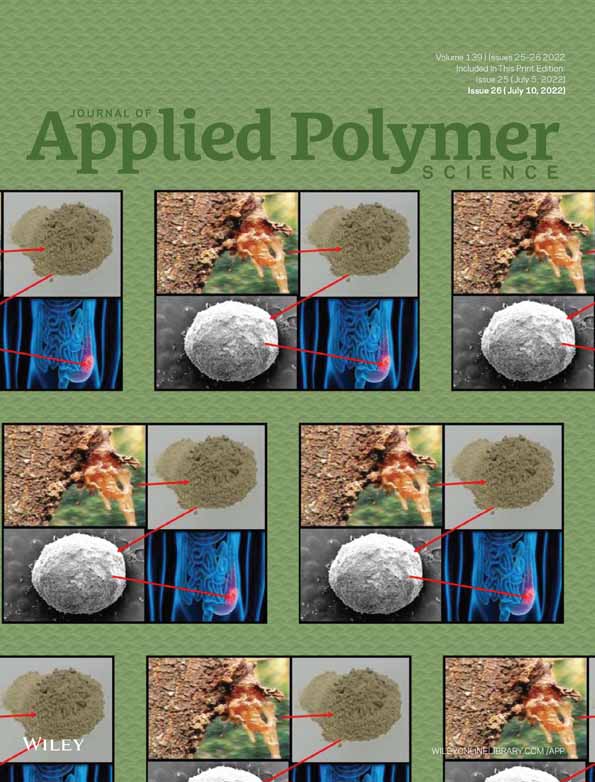RETRACTED: Effects of newly synthesized nanocomposites containing multifunctionalized silicon nitride nanoparticles: A study on structural, thermal, electrochemical, mechanical, morphological, water repellent properties for aerospace components
Abstract
The silicon nitride (Si3N4) nanoparticles modified by 2,5-Bis-(4-aminophenyl)-1,3,4-oxadiazole (BAPOD) investigated by scanning electron microscopy with energy dispersive X-ray spectroscopy (SEM/EDX), transmission electron microscopy, thermogravimetry (TGA), X-ray diffraction (XRD), and atomic force microscopy (AFM) were reinforced with polyurethane (PU). The newly synthesized formulations such as PU-Si3N4, PU-BAPOD, and PU-BAPOD/Si3N4 nanocomposite coated AA7055 aluminum alloy were electrochemically studied by scanning electrochemical microscopy (SECM), potentiodynamic polarization and electrochemical impedance spectroscopy (EIS) for their anticorrosion behaviors and compared with pure PU coating. EIS studies revealed excellent protection behavior for the PU-BAPOD/Si3N4 coated AA7055 aluminum alloy in 3.5% NaCl solution. The coating resistance of PU-BAPOD/Si3N4 nanocomposite was found to be 5995.23 kΩ.cm2 whereas lower coating resistance was observed for the pure PU coating (141.24 kΩ.cm2). It is found that the coating resistance of PU-BAPOD/Si3N4 nanocomposite is over 42% higher than that of the PU. The measured current for aluminum ions by SECM investigation over the EP-BAPOD/Si3N4 nanocomposite coating was very low (1.6 nA) compared with PU-Si3N4 (7.6 nA) and pure PU coated AA7055 (14.9 nA). The surface morphological studies of the coated AA7055 by SEM/EDX analysis and XRD analysis revealed that the Si3N4 nanoparticles were enriched at the corrosion products which prevented corrosion initiation processes. The enhanced mechanical properties were noticed by mechanical analysis for the PU-BAPOD/Si3N4 nanocomposite coating when the concentration of nanoparticles was 2 wt%. However, there was a decrease in their mechanical properties beyond 2 wt% due to the aggregation of nanoparticles in the PU coated specimen. The results showed that the newly developed PU-BAPOD/Si3N4 nanocomposite coating possessed superior corrosion protection and enhanced hydrophobic behaviors (WCA: 149°). Therefore, it was concluded that the newly synthesized PU-BAPOD/Si3N4 nanocomposite provided excellent barrier, hydrophobic, and mechanical properties due to the addition of BAPOD/Si3N4 nanoparticles to the PU resin which prevented the degradation of materials and helped to prolong the life of the coated AA7055 aluminum alloy.
CONFLICT OF INTEREST
The author declares that he has no known competing financial interests or personal relationships that could have appeared to influence the work reported in this article.
Open Research
DATA AVAILABILITY STATEMENT
The data that support the findings of this study are available from the corresponding author upon reasonable request.




